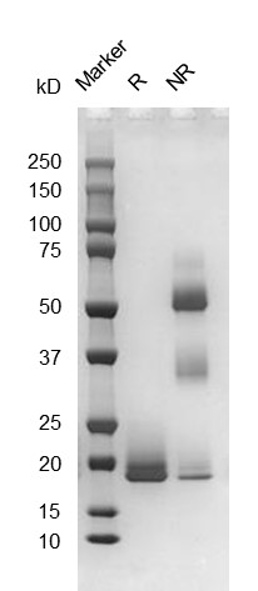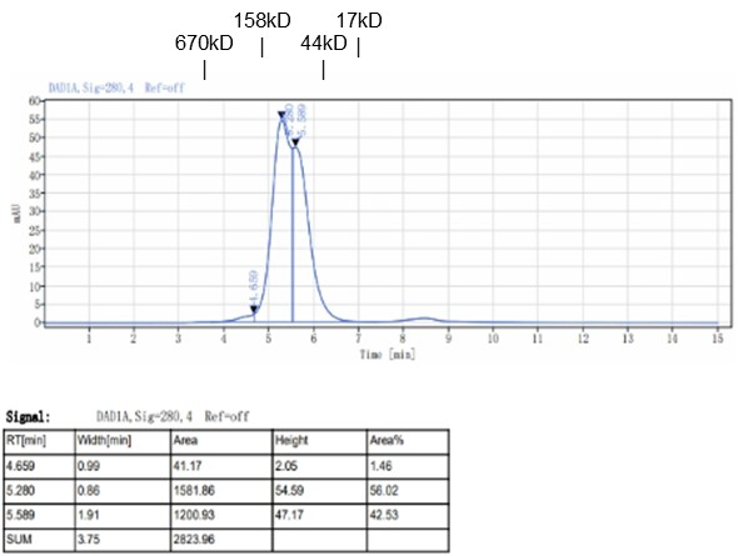hCD3e(22-126)-acid-His_hCD3d(22-100)-basic-Flag
Description
T-cell surface glycoprotein CD3 epsilon chain (CD3e) and delta chain (CD3d) are components of the TCR-CD3 complex present on T-lymphocyte cell surface, playing a crucial role in adaptive immune response. When antigen presenting cells (APCs) activate T-cell receptor (TCR), TCR-mediated signals are transmitted through the cell membrane via CD3 chains including CD3d, CD3e, CD3g and CD3z. All CD3 chains contain immunoreceptor tyrosine-based activation motifs (ITAMs) in their cytoplasmic tails. Upon TCR engagement, these motifs become phosphorylated by Src family protein tyrosine kinases LCK and FYN, leading to downstream signaling pathway activation. Additionally, CD3e is essential for correct T-cell development as it initiates the TCR-CD3 complex assembly by forming two heterodimers CD3d/CD3e and CD3g/CD3e. CD3e also participates in internalization and cell surface down-regulation of TCR-CD3 complexes via endocytosis sequences present in CD3e cytosolic region. Mutations in CD3e result in severe combined immunodeficiency (SCID). On the other hand, CD3d plays a pivotal role in thymocyte differentiation by participating in correct intracellular assembly and surface expression of the TCR-CD3 complex. In the absence of a functional TCR-CD3 complex, proper thymocytes differentiation becomes unattainable. CD3d interacts with CD4 and CD8 to establish a functional connection between the TCR and coreceptors CD4 and CD8, which is needed for activation and positive selection of CD4 or CD8 T-cells. Defects in CD3d lead to SCID autosomal recessive T-cell-negative/B-cell-positive/NK-cell-positive (T-/B+/NK+), a genetically and clinically heterogeneous group of rare congenital disorders characterized by impaired humoral and cell-mediated immunity, leukopenia, as well as low or absent antibody levels.
Product name | hCD3e(22-126)-acid-His_hCD3d(22-100)-basic-Flag |
Species | Homo sapiens |
Expression system | HEK293 |
Buffer | PBS, pH 7.4 |
Delivery condition | Dry ice (-80°C) |
Delivery Time | 1 week if in stock; 4 weeks if production needed |
Storage condition | Store at -80°C |
Brand | BioMetas |
Applications | Cancer Research, Immune Checkpoint, Immunotherapy, Targeted Therapy |
Aliases/Synonyms | T3E_T3D, TCRE_TCRD, IMD19 |
Reference | |
Note | For research use only. Not suitable for clinical or therapeutic use. |
Size | 1mg, 5mg, 10mg, 50mg, 100mg |
Brand | BioMetas |
Product type | Antigen |
Expression system | HEK293 |
Applications | Cancer Research, Immune Checkpoint, Immunotherapy, Targeted Therapy |
Contact Us for a Quote!
Data Gallery
Fig. 1.) 4-20% SDS-PAGE analysis
Recombinant protein was visualized by Coomassie Brilliant Blue R250 staining.

Fig. 2.) SEC-HPLC analysis
Column: Superdex 200 Increase 5/150 GL
Running buffer: 2xPBS, pH 7.4
